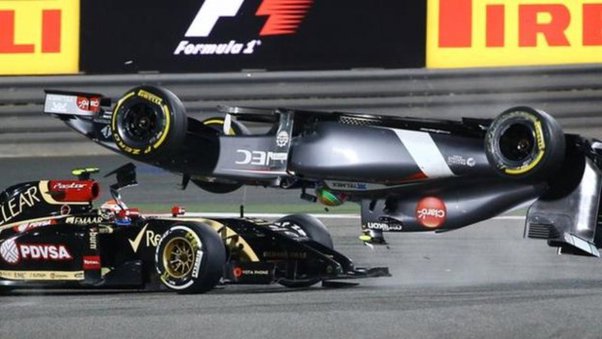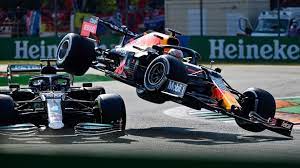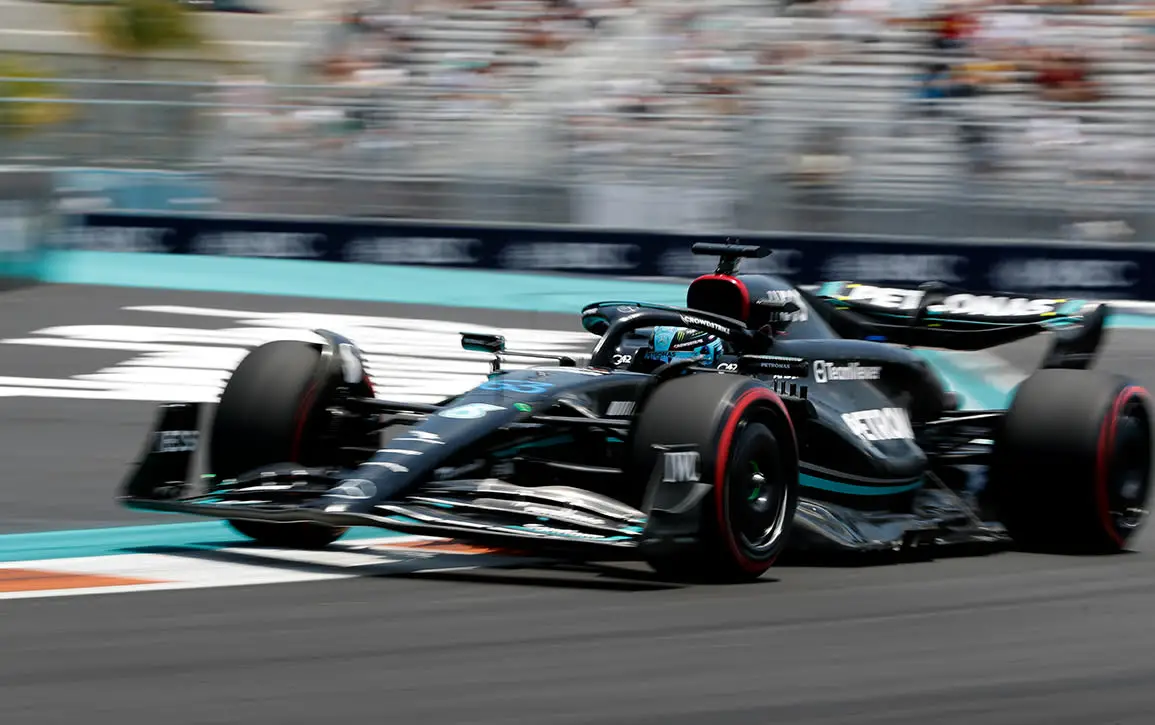Formula 1 is the pinnacle of motorsport, where the best drivers in the world compete in the fastest and most advanced cars ever made. But how hard is it driving an F1 Car – How hard is it?? What does it take to master these machines and race at the highest level?
In this article, we will explore the challenges and skills involved in driving an F1 car, and why it is not something that anyone can do. We will also look at some of the physical and mental aspects of being an F1 driver, and how they prepare for the demands of the sport.
Driving An F1 Car – It’s Hard to Get It Moving!
In an episode of the world popular motoring show Top Gear, one of the presenters – Richard Hammond (also nicknamed the Hamster) drove an F1 car for the first time.
The car he rove was the Renault R25. It has a V10 engine and was capable of producing over 1,000 HP. It was also the car that Fernando Alonso won one of the world championships with.
The video of this epic adventure is included below and shows just how hard itis to drive an F1 car.
Driving An F1 Car – Handling
One of the first things that make F1 cars difficult to drive is their handling. F1 cars are designed to be aerodynamic and lightweight, which means they have very little traction control or ABS. The driver has to control the 1000 horsepower engine with their right foot, and modulate the brakes with their left foot.
F1 cars also have very sensitive steering, which requires a lot of precision and finesse. The driver has to steer the car with minimal input, as any sudden or excessive movement can upset the balance of the car and cause it to spin or slide.
F1 cars are also very dependent on their tires and brakes for grip and performance. The tires and brakes have to be at the optimal temperature range to work effectively, which means the driver has to drive fast enough to generate heat, but not too fast to overheat them.
Driving an F1 car at low speed is very difficult, as the car will struggle to turn or stop. At high speed it is even more difficult, as the driver has to cope with immense G-forces and cornering speeds that can exceed 190 mph.
Driving An F1 Car – The G Force

Another factor that makes F1 cars challenging to drive is the G-forces that they produce. G-force is a measure of acceleration, and it affects the driver’s body and brain in various ways.
F1 drivers experience up to 5 Gs of lateral force when cornering, which means they feel five times their body weight pushing them sideways. This puts a lot of strain on their neck and core muscles, which have to resist the force and keep their head upright.
F1 drivers also experience up to 6 Gs of longitudinal force when braking, which means they feel six times their body weight pushing them forward. This compresses their chest and lungs, making it harder to breathe and speak.
F1 drivers also experience up to 4 Gs of vertical force when going over bumps or curbs, which means they feel four times their body weight pushing them down. This can cause blood to pool in their lower body, reducing blood flow to their brain.
To cope with these forces, F1 drivers have to undergo rigorous physical training and conditioning. They have to strengthen their muscles, especially their neck and core, and improve their cardiovascular endurance and stamina. They also have to wear special suits and helmets that help them regulate their body temperature and blood pressure.
Driving An F1 Car – F1 Drivers Skill

Besides the physical challenges of driving an F1 car, there are also many skills that F1 drivers need to master. These include:
Racing lines
The racing line is the optimal path that a driver takes around a circuit, maximizing speed and minimizing distance. F1 drivers have to memorize every corner and every nuance of every track, and adjust their lines according to the conditions and the competition.
Overtaking
Overtaking is the act of passing another car on the track, usually by exploiting a gap or an advantage. F1 drivers have to be opportunistic and aggressive when overtaking, but also respectful and fair.
They have to judge the distance, speed, and angle of their car and their opponent’s car, and execute the maneuver without colliding or compromising their position.
Defending
Defending is the act of preventing another car from overtaking you on the track, usually by blocking or covering their line. F1 drivers have to be strategic and assertive when defending, but also sensible and safe.
They have to anticipate their opponent’s moves and react accordingly without breaking any rules or causing any incidents.
Defending slows the car down and if the driver was trying tp catch up to a car in front, the act of defending will generally allow the driver in front to pull away.
Strategy
Strategy is the plan that a driver and their team follow during a race. It involves factors such as pit stops, tire choices, fuel management, weather changes, safety cars, etc.
F1 drivers have to be flexible and adaptable when following their strategy, but also communicative and cooperative.
They have to listen to their team’s instructions and provide feedback on their car’s performance and condition.
Mental Toughness
Mental toughness is the ability to cope with stress, pressure, and adversity, and maintain focus, confidence, and motivation.
F1 drivers have to be mentally tough, as they face many challenges and distractions during a race.
They have to overcome their fears and perform at their best under any circumstances. All this while being subject to the harsh environment of their car (excessive heat, bumps, g-forces etc)
Driving An F1 Car – The Dangers

There have been many safety improvements over the years that have reduced the dangers of being an F1 driver.
Despite this there are still dangers associated with travelling at speed of up to 300km/h in close proximity to 19 other F1 cars. Each driver is not content to simply drive in formation. They are actively seeking to find a way of getting past the driver’s in front.
Accidents happen, and while serious injury has been avoided in the current decade there have been serious accidents that could have resulted in death or serious injury.

Conclusion
Driving an F1 car is not easy. It requires a lot of physical strength, skill, and mental toughness. F1 drivers are some of the best athletes in the world, and they have dedicated their lives to the sport. They are not just driving fast cars, they are pushing the limits of human potential.
If you enjoyed this article, please share it with your friends and family. And if you want to learn more about F1, check out our other articles on f1worldwide.com

